This classic recipe hits exactly like you'd expect: light, refreshing, and absolutely delicious. Classic Linguine Alla Puttanesca will always be a household favorite.
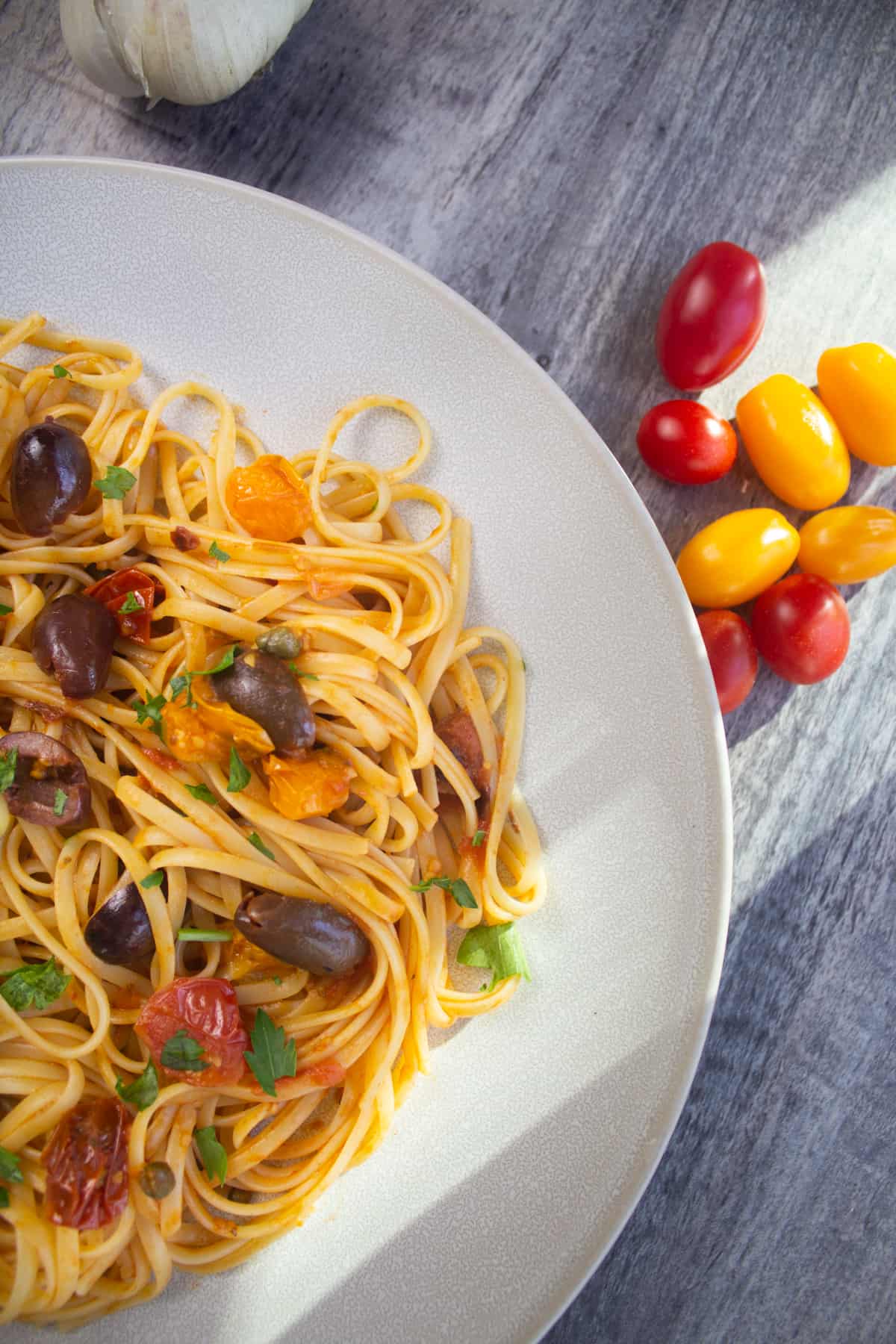
Looking for more classic pasta? Try our bolognese or short rib ragu!
Jump to:
Puttana or Puttanesca?
Puttanesca comes from the Italian word "puttana" loosely translating to "whore." There are a bunch of explanations that have to do with prostitutes, like the girls would cook it in between seeing different men, use the aroma to lure men into the brothel, or cook it for men in between sexcapades.
I have to say, these feel like weak explanations all created by some guy who got caught seeing a prostitute by his wife. Imagine the guy talking to his wife, "I swear, I never would have gone into the whore's house, but sweetheart the smell of the sauce was unbelievable. Once I was in there what was I going to do, insult her?" It just doesn't add up to me.
Ingredients Notes and Substitutions
Crushed Red Pepper. You could substitute a teaspoon of calabrian peppers. Either will spice up your dish.
Anchovies. These are a necessary part of the recipe! BUT if you have to leave them out, you can.
Step-by-Step Directions
Step 1: Heat a heavy-bottomed pan to medium-high heat. Add olive oil and once it begins shimmering, add garlic and crushed red pepper. Stir often until the garlic becomes fragrant. Then add in the tomato paste and anchovies and spread out on the pan until it begins developing a bit of a crust, about 1-2 more minutes.
Pro-Tips
- Developing the tomato paste is really important. It adds an intense and deep aroma and flavor of tomato that adds wonders to any dish.
Step 2: Stir in the cherry tomatoes, halved. Add a little salt and stir frequently for 5 minutes. Start boiling the linguine while the cherry tomatoes are breaking down. Let the tomatoes break down on their own before breaking them apart with a wooden spoon.
Step 3: After 5 minutes, stir in the capers, olives, and a little more salt for flavor and stir. Allow the sauce to simmer for 2 minutes and then transfer in some pasta water. The pasta water will add starch to the sauce and help it stick to the linguine.
Step 4: Strain the linguine and add it directly into the pan. Mix for 3 minutes, stirring continuously until the linguine absorbs some of the sauce. It should take on a reddish color as the pasta absorbs the sauce.
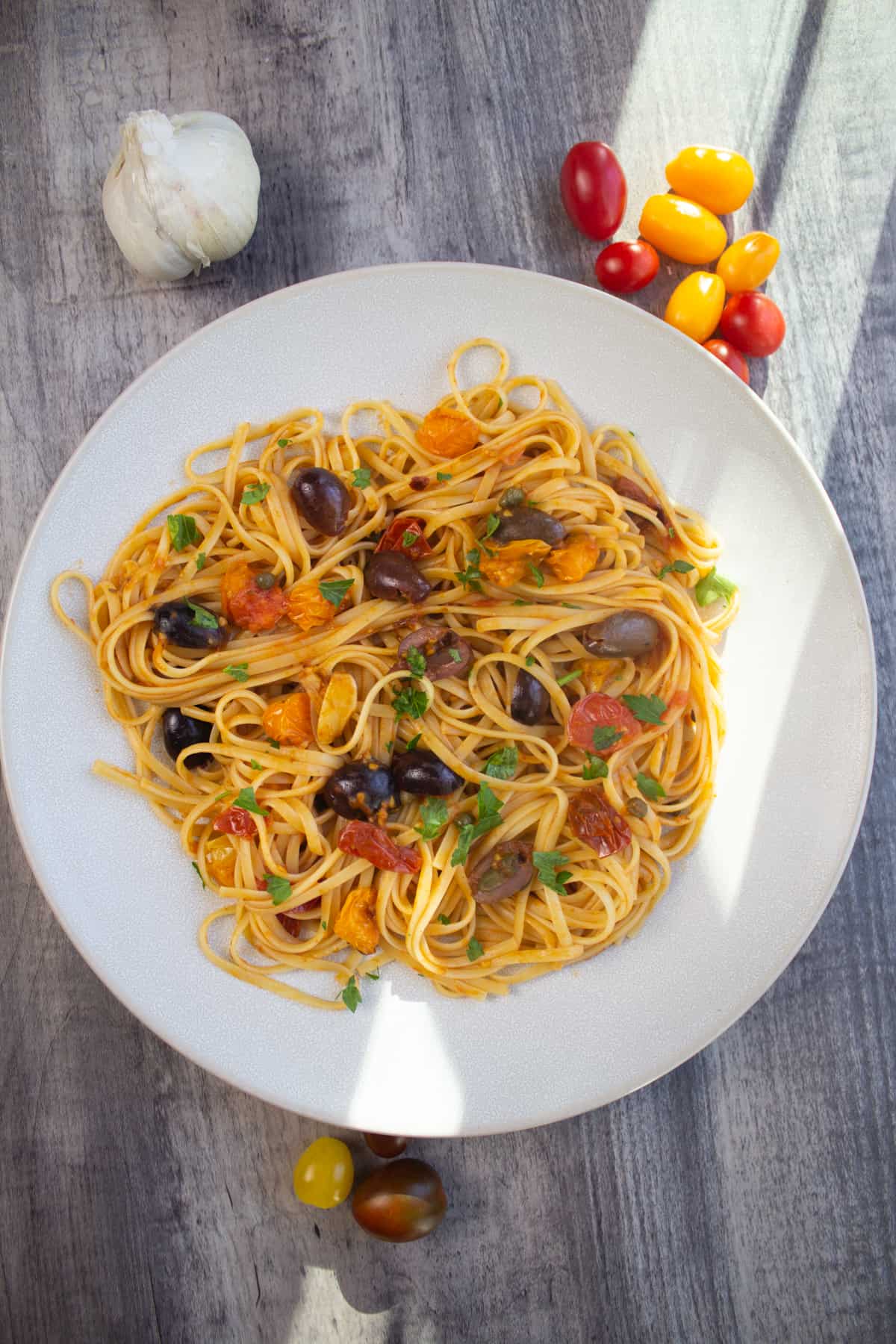
FAQs
No. You will taste the salt and it will make the sauce a little more savory. The capers and the anchovies will only accentuate the tomato flavor in the pasta.
Store in an airtight container in the refrigerator. Reheat with olive oil on the stove on medium heat.
"In the style of the whore" is the best translation. Basically, it's thought that this recipe was made by prostitutes for their patrons in Old Italy.
I love puttanesca because it's a light enough sauce to enjoy in the winter or the summer. It's unbelievably simple but that is the amazing thing about Italian food. The simplicity of high-quality ingredients is what makes Italian food so good. Good olive oil, fresh garlic, and anchovies make this easy recipe taste unbelievable.
Please leave a comment and star rating below in the recipe card! I love to hear what you think of our recipes. Feel free to tag us on Instagram @vindelgiudice.
More Classic Pasta Recipes
📖 Recipe

Classic Linguine Alla Puttanesca
Equipment
- 1 large sauce pan
Ingredients
- 1 lb linguine
- ½ cup chopped kalamata olives
- 8 anchovy filets, chopped
- 2 cups cherry tomatoes, halved
- 3 tablespoon capers
- 2 tablespoon tomato paste
- 1 teaspoon salt
- 7 cloves garlic, crushed
- 1 teaspoon crushed red pepper
- 2 tablespoon olive oil
Instructions
- In a large pot, boil linguine until al dente. Save some pasta water.
- Heat a heavy-bottomed frying pan to medium-high heat. Add tablespoon of olive oil. Once the olive oil is shimmering, add garlic and crushed red pepper. Saute both for 2 minutes. Add chopped anchovies and stir frequently for another 2 minutes.
- Add in halved cherry tomatoes and tomato paste and stir frequently for about 5 minutes until the tomatoes begin to break down. Next add capers, olives, and salt and stir. Simmer for 2 minutes.
- Strain pasta and transfer to a saucepan. Stir until linguine takes on a reddish hue and add ¼ cup of pasta water.
- Remove from the pan and serve.
Notes
- Allow the cherry tomatoes to break down on their own without crushing them so that you know when they are soft enough to be served.

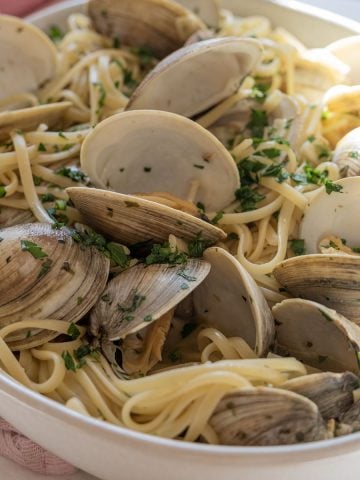
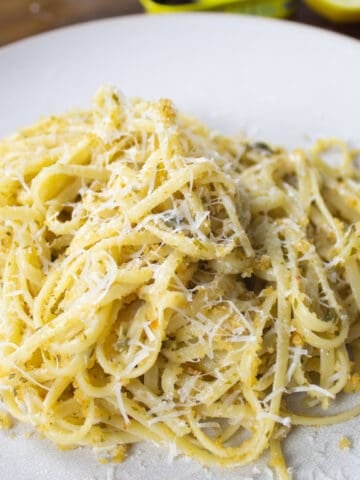
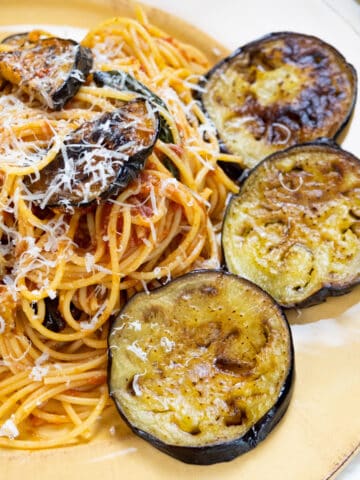
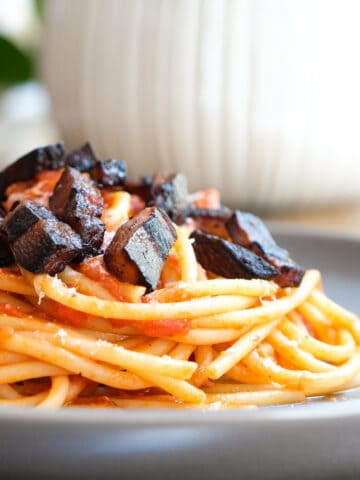
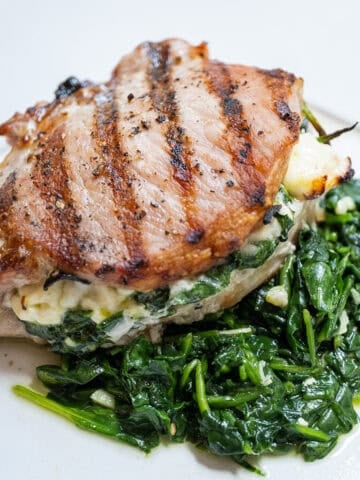
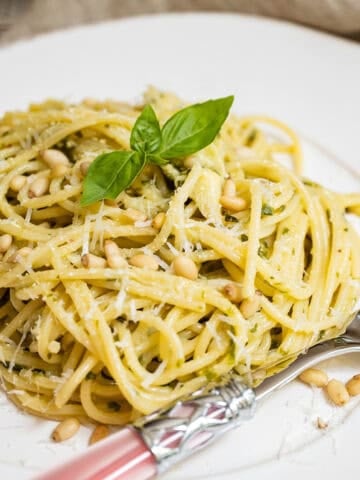

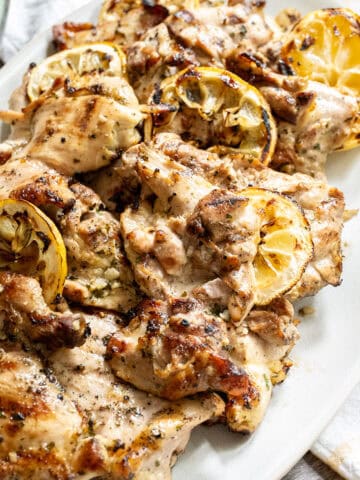
Nicola
I love this recipe. Puttanesca is one of my favorites. I added some mussels!